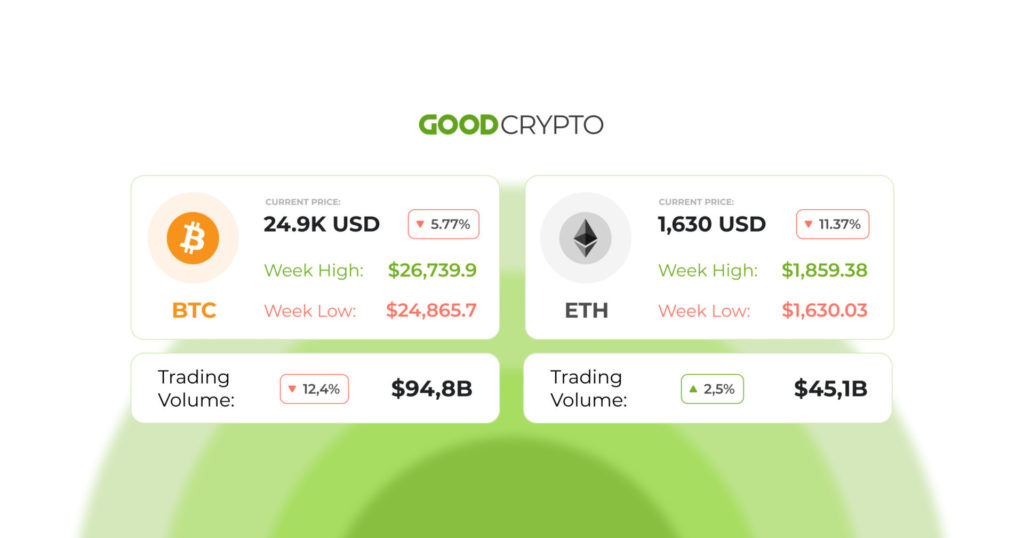Hi there!
We have brought together the past week’s most exciting events in this Good Crypto digest. If you want to get these updates as soon as we post them, follow us on Twitter or Telegram.
Quick weekly news
A lawsuit prompts the Binance US to recruit a former SEC enforcement official
Binance, a crypto exchange based in the United States, has reportedly enlisted the services of former SEC enforcement co-director George Canellos and three other lawyers to form its legal defense team.
The move comes as Binance US faces allegations from the SEC of operating as an unregistered securities exchange. Former SEC internet enforcement chief John Reed Stark believes Binance is preparing for potential criminal prosecution and emphasizes the gravity of the fraud allegations.
The SEC has also targeted global exchanges Binance and Coinbase with similar allegations. Binance US has opposed the SEC’s proposed remedies, arguing that they would effectively terminate its operations.
Version 4 of Uniswap’s code enables additional varieties of liquidity pools
Uniswap Labs has released the draft code for Uniswap V4, which introduces “hooks” or plugins enabling developers to create customized liquidity pools. As the largest decentralized crypto exchange by volume, Uniswap’s latest version is V3, deployed on May 4, 2021.
Uniswap V4 aims to enable pool deployers to incorporate code that performs specific actions at critical points in the pool’s lifecycle, such as before or after a swap or before or after changes to an LP position.
The release of the source code is the initial step toward launching Uniswap V4. The team plans to engage with the Uniswap community and refine the code over time. The deployment of V4 will occur once sufficient consensus is reached on the final version, while previous versions will remain accessible.
Uniswap V4 aims to enable pool deployers to incorporate code that performs specific actions at key points in the pool’s lifecycle, such as before or after a swap, or before or after changes to an LP position.
Following the heist of more than 8 well-known Crypto Twitter accounts, scammers steal around $1 million
In recent weeks, a group of scammers has taken control of more than eight Twitter accounts belonging to prominent figures in the crypto industry, using them to promote phishing scams. According to blockchain investigator ZachXBT, the group has managed to steal nearly $1 million worth of cryptocurrency.
ZachXBT discovered several connected wallets on the blockchain associated with the phishing scams promoted through the compromised accounts. While most of the attacks resulted from SIM swaps, other accounts may have been stolen using a Twitter admin panel.
Among the targeted accounts are those of individuals like Cole Villemain, the founder of Pudgy Penguins; Steve Aoki, a DJ and NFT collector; and Pete Rizzo, the editor of Bitcoin Magazine. Even Peter Schiff, a known critic of cryptocurrencies, had his account hacked to promote a suspicious link related to tokenized gold in decentralized finance.
ZachXBT expressed concern about the slow response times from Twitter Support, allowing the scammer’s tweets to remain active for hours or even days. He advised people to use security keys instead of SMS-based two-factor authentication for better security.
One of the hacked accounts mentioned by ZachXBT was that of Mira Murati, the Chief Technology Officer of OpenAI. Her account shared a phishing link for a fake airdrop of an ERC-20 token called OPENAI, which gained significant attention before it was deleted.
In late May, Arthur Madrid, the co-founder, and CEO of The Sandbox metaverse platform, also experienced a similar hack on his Twitter account, promoting a fake SAND token airdrop. It’s uncertain whether this incident is connected to the group of hackers identified by ZachXBT.
Upgrades in Polygon 2.0 allow users to access the internet’s “Value Layer”
Polygon Labs recently unveiled “Polygon 2.0,” a comprehensive upgrade to establish the “Value Layer” of the internet. The upgrade will enable users to create, exchange, and program value.
Polygon 2.0 radically changes protocol architecture, tokenomics, and governance, paving the way for unlimited scalability and unified liquidity through ZK (zero-knowledge) technology. This network of interconnected chains powered by ZK technology ensures secure and instant cross-chain interactions without the need for additional security or trust assumptions.
Polygon 2.0 unifies protocols, offering seamless usage across zk-Ethereum Virtual Machine tech, proof-of-stake, and supernets, creating a cohesive experience. Key features include token evolution and long-term decentralized governance.
Further details on Polygon 2.0 will be revealed in the coming weeks.
Overbought and Oversold Signals on a Trending Market as one of RSI strategies
When analyzing the crypto market, one common approach is to use the RSI indicator to identify overbought and oversold signals. However, relying solely on these signals does not guarantee to catch the absolute bottom or top of the market. Buying based only on an oversold signal can be risky, as the market may continue to decline even after the alert.
To make more informed trading decisions, traders should combine RSI with other indicators like Moving Averages and Bollinger Bands. These additional tools can confirm signals and provide a broader perspective for your trading strategy.
While RSI can provide valuable insights, incorporating multiple indicators enhances your overall trading approach.
Receive an instant notification when a new coin is listed with GoodCrypto’s PRO plan.
Top Crypto Meme of the Week
We hope this digest was valuable and informative for you! If you want to be the first one to receive new crypto insights and stay up-to-date with the market, follow us on Twitter or Telegram. Become a better trader with the Good Crypto App!
